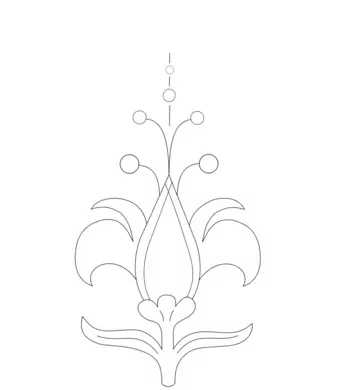
Creating new hand embroidery designs for Church Vestments and church linens.
– The Fleur de lis which symbolizes purity and often represents the Trinity. The Virgin Mary and the angel Gabrielle are also represented by the Fleur de lis. This particular design is also reminiscent of the pomegranate.
Like this:
Like Loading...
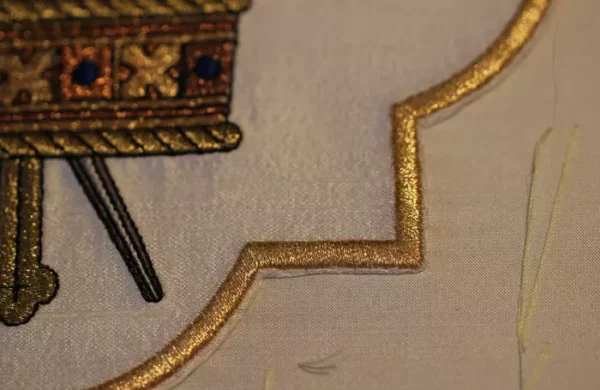
The design worked in a quatrefoil border on silk dupioni, which will need to be applied to the base silk fabric….
Like this:
Like Loading...
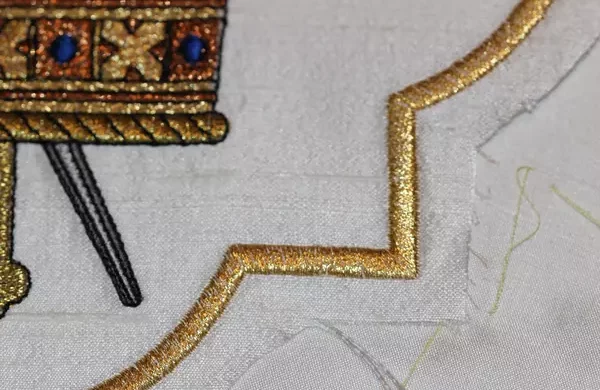
Applying the Ecclesiastical Machine Embroidery Design involves clipping corners, stitching, and turning the edge under. The motif is carefully stitched in place, ensuring a secure and neat attachment.
Like this:
Like Loading...
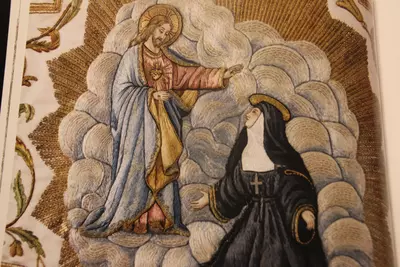
The Museum of the Visitation features stunning works of art produced, collected, and saved over many Centuries by the Order of the Visitation. The artworks include many ornamental branches of church art such as statues, silver, textiles, and silks.
Like this:
Like Loading...
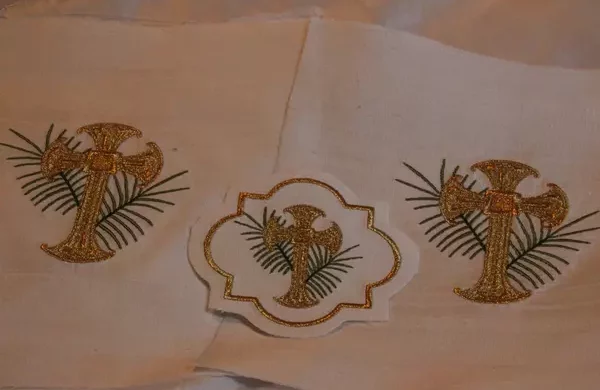
Using modern techniques to complete an Ecclesiastical Vestment set can be a lifesaver. The designs can often be modified in size to fit specific needs. The colors can often be selected to suit a particular occasion or color scheme. Selecting someone who is well versed in the Ecclesiastical Arts, as well as fluent with modern machine embroidery can be a delightful way to expand design possibilities for enhancing Ecclesiastical Vestments…
Like this:
Like Loading...
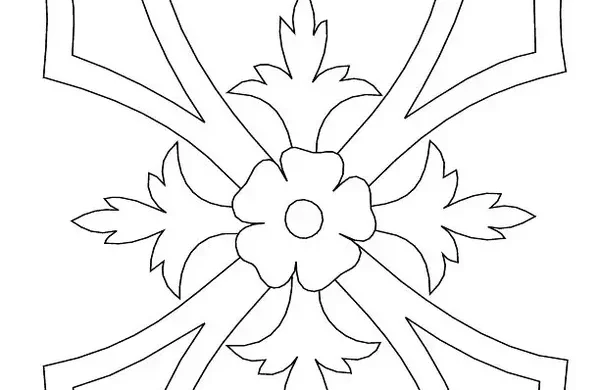
Vintage ecclesiastical embroidery patterns, mostly 100+ years old, delicate on aged paper. Fragile and creased, the paper poses challenges for fabric transfer; the slightest touch risks damage. Despite their impracticality in original condition, efforts are made to add new life. The best solution involves creating clean versions through scanning the original design, though it’s a challenging process.
Like this:
Like Loading...
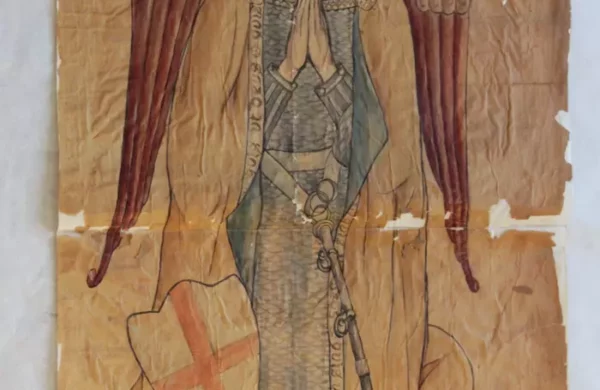
Collection of vintage Ecclesiastical Embroidery Designs, Drawings, and Patterns.
– The collection dates from the 1870s, and includes a wide variety of items, both in terms of content and quality, as well as size. The process of identifying the designs in the collection will take months. So, let us wait for the entire collection of Ecclesiastical Hand Embroidery Patterns to be cataloged.
Like this:
Like Loading...
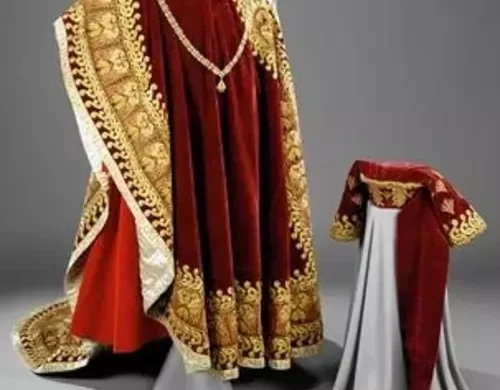
Featuring the Habsburg Splendor Exhibit at the Minneapolis Institute of Arts, a showcase of exquisite goldwork embroidery. Don’t miss some pieces, including suits of armor, tapestries, curiosities, and renowned paintings by artists like Caravaggio and Hans Holbein. Visit the intricate details on the Minneapolis Institute of Art’s webpage for a closer look at this splendid collection.
Like this:
Like Loading...
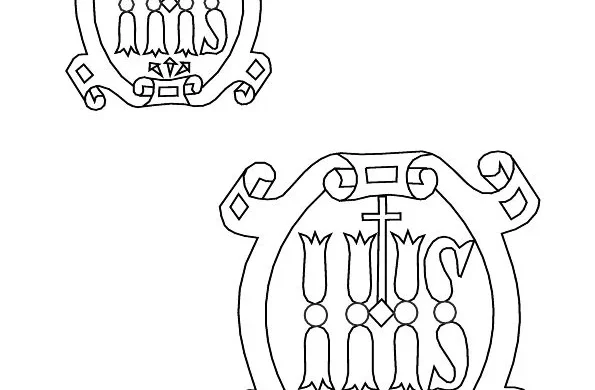
The IHS Lenten Design, taken from a detailed border pattern, offers versatility. The stylized floral elements converted into letters make an interesting stand-alone element. It can be stitched with subdued threads for Lent or with goldwork threads and silk floss for a shimmering effect, symbolizing the glory of the Resurrection. With two available sizes, this design is suitable for stoles, linens, pulpit falls, or even an altar frontal.
Like this:
Like Loading...
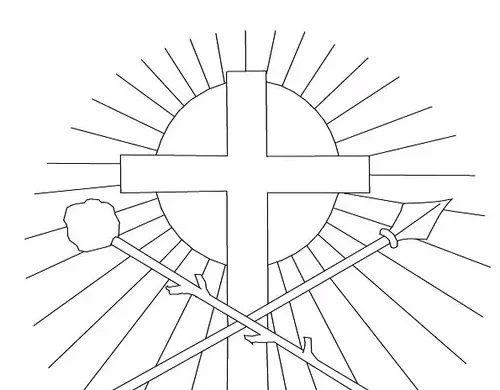
This treasure comes from a rare copy of a German book that arrived over the Christmas Holidays. The original design is very small. When it is enlarged on a copier, the design loses definition and the pixels become an issue. This seemed appropriate as a first challenge with the graphics program. Lots of straight lines, a circle, and a few wavy lines for rocks.
Like this:
Like Loading...
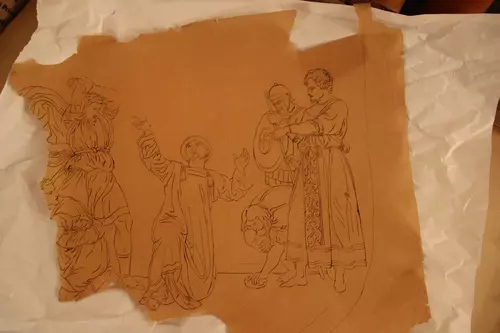
Trash or Treasure?
– These beautiful Ecclesiastical Designs are in tatters, are torn, and have none of their original beauty or glory. But they represent the hard work and artistic talent of a designer from years ago, creating ideas on paper to be transferred via Needle and Thread to fabric. They represent hours of selfless giving of time and talent to create objects of beauty for use in the Church.
Like this:
Like Loading...
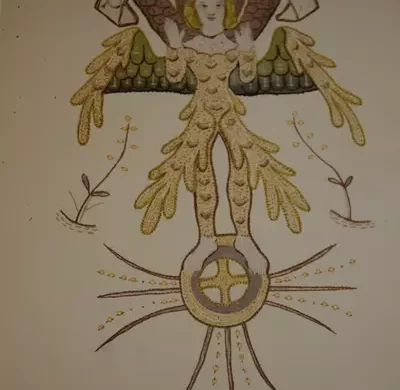
Two of those unusual things are the Seraphim and the Cherubim. Artisans of the past have grappled with these creatures and provided some interesting interpretations. The powdering designs, dating from the glory days of Opus Anglicanum, give us some wonderful examples of these delightful interpretations of Seraphim and Cherubim.
Like this:
Like Loading...
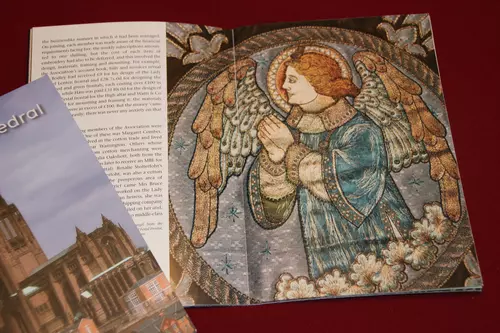
“The Embroideries at Liverpool” book talks about how people made beautiful embroideries for Liverpool Cathedral. A group of ladies had the idea to use one designer for all the embroideries, making them match the building. The book shares the story of these women who not only created amazing embroideries but also helped with the money for the projects.
Like this:
Like Loading...
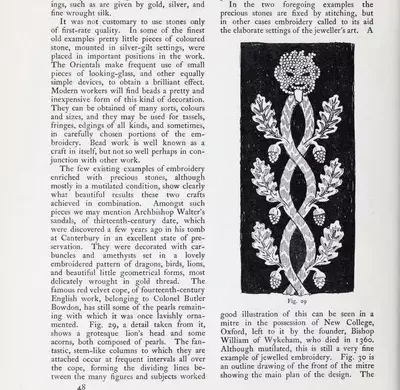
Post from Gracie Christie’s book Embroidery: A Collection of Articles on Subjects Connected with Fine Embroidery which had the design for the lion’s head worked in pearl and beadwork. While updating links in that article, some other resources surfaced, which might provide enjoyable reading and viewing as the New Year gets underway. The first stop is a short journey back in time to a previous Exhibit at the Metropolitan Museum of Art: Ecclesiastical Vestments of the Middle Ages: An Exhibition.
Like this:
Like Loading...
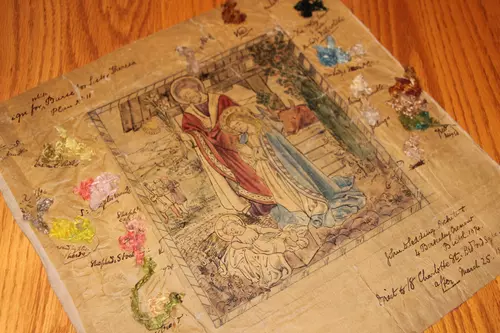
Nativity Ecclesiastical Embroidery Design created in 1874 by the architect of the Gothic Revival period John D. Sedding.
Like this:
Like Loading...
















You must be logged in to post a comment.